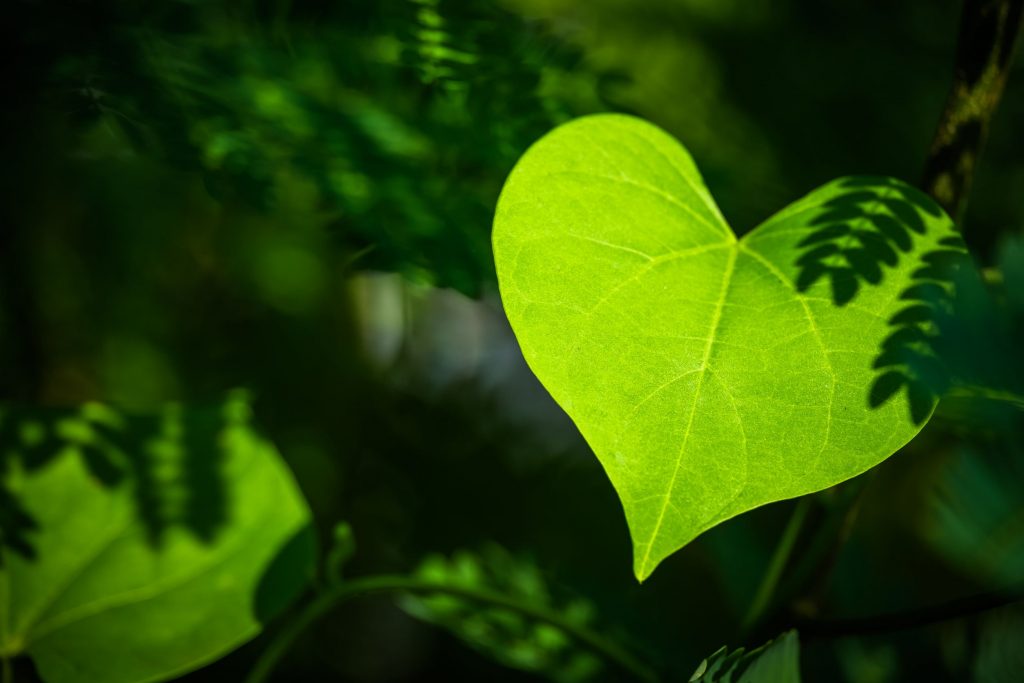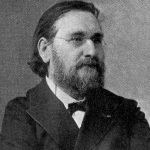Nature Cure Clinical Pearls
Sussanna czeranko, ND, bbe
Everyone loves to hear a good love story! There is exactly such a romance – one that coincides with the origins and formation of Naturopathy. It is a kind of secret all over the block, and yet is not well known among contemporary naturopathic doctors, even though the profession as we know it may well have taken a different course had these star-crossed lovers not found each other.
Our very own love story took place in New York City and New Jersey back in the late-19th century when electric streetcars were supreme and the 100-mile bicycling clubs formed all over the city. Corsets were essential attire for women, and men could not leave home without their hats. This was a time of promise for change and a dawning of a new millennium. It was the time of the birth of naturopathic medicine in North America.
In our story, we have a young man, Benedict Lust, who as a young boy was frail and considered a sissy and a weakling. Born in the small village of Michelbach, Baden, in southwestern Germany on February 3, 1872, he spent much time with his mother. He learned cooking, cleaning, and all of the domestic arts, which attracted many unkind and derogatory names from classmates. At age 6, he became very sick and needed to convalesce at home. Chance had it that a family from California was visiting his village and needed a German companion for their son. Benedict became a linguistic companion to the little boy, and at this juncture a yearning to visit America was born.
When he was a schoolboy, Benedict was obsessed with a dream of moving from Germany to America. As a teenager, he devised a plan to train as a waiter, which would enable him to fulfill his dream. At 15 years old, he was so resolute in his dream to go to America that he left home to apprentice in the hospitality trade for 2 years, receiving room and board and no wages. This training was then followed by 1-year intervals in France and England, where he mastered the art of being an exceptional waiter, as well as the French and English languages, as well as significant self-study in Spanish. He was soon catapulted to first-class waiter status and was ready to emigrate to North America.
In 1892, at 20 years of age, Benedict Lust arrived at Ellis Island, ready to take on America. In his memoirs, which he left to his brother, Otto, to publish after his death, Lust writes of his arrival in NYC:
At last I had the thrilling experience to set foot on American soil. This was a sacred moment for me, as in my childhood heart I had come to know America as well as my homeland. When I was only ten years old, I knew every state in the Union, the capitals of each state, principal cities, mountain ranges and railroads, something not many of our American boys that age today can duplicate. (Boyd, 1997, p.19)
He had come to the New World in 1892 through its principal gateway, New York City. He embraced the city with enthusiasm and purpose, and got work easily at the Savoy Hotel. There he was very quickly recognized as one of the best professional servers on staff. That year America was celebrating the 400th anniversary of Christopher Columbus’ landing. In the following year, the Columbian Exposition was planned for Chicago, to commemorate Columbus and the European discovery of America.
Figure 1. Young Benedict Lust; 1905
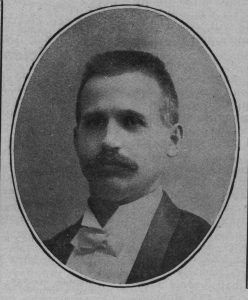
An entourage from Spain and Italy – consisting of royals and descendants – had been invited to the Chicago World’s Fair. One stopover for the dignitaries was the Savoy Hotel in New York City, and Benedict was assigned to be one of 2 principal servers. His knowledge of Spanish secured him this prestigious post, one which turned out to be very rewarding. He was given at the end a colossal tip of $250, a huge amount at that time, given that wages for a 12-hour day barely amounted to $1.00. For Benedict, receiving $250 was like a trip to the moon. With this amazing bonus, Benedict visited the Chicago fair; however, a turn of events there would radically change the course of his life forever. Such is the pattern of remarkable love stories.
Tragedy Turns to Opportunity
Traveling on an open streetcar from the Exposition in the early morning, he realized he had gone past his stop, and in his haste to descend from the streetcar, he stumbled. He was thrown into the gutter. Bloodied and severely injured, he found himself too sick to return to New York. Instead, he convalesced in Chicago, eventually returning to NYC to his previous post at the Savoy. His injuries were not responding to the treatments that he used, so he finally decided to return to Germany to get help from the one person that he thought could help him – Father Sebastian Kneipp.
His ship travel home was itself restorative and healing. Rather than go directly to see the Water Cure Pfarrer, Benedict returned to his childhood home and visited with his family for 5 months, sharing stories about his time in America. Recognizing that his health was still greatly compromised by a number of years of exhaustive work – and then acutely by his mishap in America – he returned to his primary purpose for his journey, to seek the help of Kneipp. Receiving a letter of introduction from the family priest, to present to Kneipp, Lust made the journey to Wörishofen. Forty-seven years later, Lust writes of that first meeting with Kneipp: “My first audience with this pioneer of natural healing is a vivid memory as though it occurred but yesterday. Yet, it was in March, 1894 that I first saw him.” (Boyd, 1997, p.31)
What impressed Lust most about Kneipp was “his alertness and unbelievable powers of perception of all that was going on about him.” (Boyd, 1997, p.32) Lust underwent the water-cure treatments recommended by Kneipp. So effective were these simple water cures that Lust was quickly converted into a follower of hydrotherapy, despite not really having this intention when first coming to Wörishofen. Lust later described the core essentials of the Kneipp cure he experienced: “Know how to live, do not overdo in anything, lead a clean life, trust in God, and let Nature cure you.” (Boyd, 1997, p.34) Lust’s time with Kneipp was transformational. It soon became apparent that Lust was not destined to continue his hotelier trade. After spending 8 months at Wörishofen, Lust was fervent with desire to spread the word about Kneipp’s water cure. He writes about that repurposing of his life: “I was inspired and eager to share what I had learned with anyone who needed and wanted good health. I was ready to return to America fully inspired by the teachings and example of Father Kneipp.” (Boyd, 1997, p.41) Meanwhile, on the other side of the Atlantic, a woman named Louisa Stroebele was building her own career. Neither knew that their destinies would intersect.
Louisa Stroebele: World Traveler & Suffragette
While Benedict Lust was occupied with returning to Germany and to Wörishofen in search of health, Louisa Stroebele had been on her own path of healing. She had been a student of Arnold Rikli, a naturalist, who popularized sun and air baths, most often taken in the buff. She had also studied dietetics and was an exceptional cook. These studies would become foundational for her as her life unfolded when she established her life in America. Prior to her coming to America, Louisa had an adventurous life working as the personal assistant of Lady Cook from England.
Lady Cook, prior to her marriage into English aristocracy, was known as Tennessee (or Tenny) Claflin (1843-1923), a suffragette, best known for being the first successful woman to open a Wall Street financial brokerage in 1870 with her older sister, Victoria Woodhull. With the financial backing and tips for success from Cornelius Vanderbilt, the sisters’ success in the first 6 months of business made them a small fortune of $700 000 – or a hefty $13 million in today’s dollars. (Broyles, 2014) Using the profits from their stock market brokerage, they started a weekly newspaper advocating sexual education for teenagers, 8-hour work days, fair wages, and gender equality, all of which still being sought today. (Broyles, 2014) Tennessee Claflin was a suffragette who voiced equality for women at a time when women were relegated to chattel status in the community, incapable of and legally unable to own property of their own. She argued for the vote for women, which would not come until 1919.
Louisa traveled 3 times around the world with Tenny and undoubtedly embraced Lady Cook’s feminist and independent attitudes. As well, Louisa was herself a financially independent woman who owned properties and had a lucrative, steady income stream.
The First Meeting
We can only speculate about any possible sparks that flew between Benedict and Louisa when they first met. The meeting was unrecorded, and the particulars only speculative. However, given what transpired in short order, and considering the monumental partnership that ensued, it is entirely possible to fill in the missing pieces of this momentous and auspicious crossing of paths.
Benedict was a devout Catholic. When he moved to NYC, he belonged to a church choir which made pilgrimages to various churches, one of which was St Anthony of Padua, located in Butler, New Jersey. Butler was a pastoral village nestled among picturesque viewpoints, surrounded by the Ramapo Mountains and deciduous forests. The priest residing at St Anthony was Reverend Albert Stroebele, who would lead the choir tours. It was 1894 when Benedict first met Louisa. No words were spoken. He saw a young woman whom he described in his own words as “a strong, independent, yet warm-hearted girl with a queenly carriage and forceful personality.” (Boyd, 1997, p.50) Seeing her for the first time, from his later accounts, Lust had already concluded that he was no match for this powerful woman.
Was Louisa aware that this young man was smitten with her? She had come to Butler to visit her brother, and was so enthralled with the beauty of the town and countryside that she decided to stay. Louisa acquired 60 acres from the St Anthony Catholic Church – a feat that has not been matched since. In fact, while visiting the town of Butler, I have been told by locals that the sale of church property and, in particular, to a woman in the late-19th century, was indeed a once-in-a-lifetime event. This tract of land bordering on the village had 2 robust streams, a large pond, and rolling landscapes of forest, meadows, and a plethora of vegetation.
Figure 2. Louisa Lust; 1918
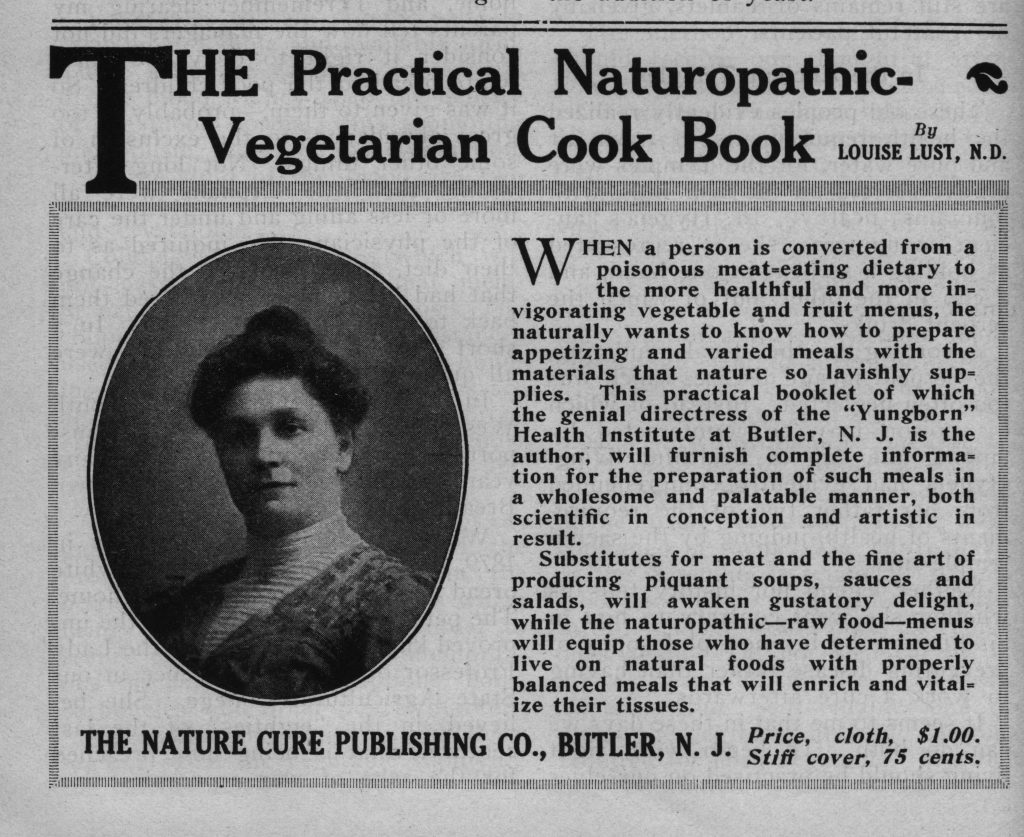
Figure 3. Louisa’s House, Butler, NJ
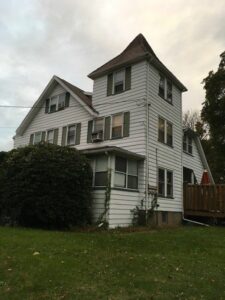 Louisa opened up a health retreat called the Bellevue Sanitarium, featuring Rikli air baths, air houses (which were small 1-room cottages), and ample space for hiking and bathing. Located just 30 miles from the bustle of NYC, the Bellevue could be reached within 1 hour by train, followed by a short 1-mile walk from the train station in Butler. The peace and relaxation found here were in high demand by those living in the rapidly urbanizing NYC.
Louisa opened up a health retreat called the Bellevue Sanitarium, featuring Rikli air baths, air houses (which were small 1-room cottages), and ample space for hiking and bathing. Located just 30 miles from the bustle of NYC, the Bellevue could be reached within 1 hour by train, followed by a short 1-mile walk from the train station in Butler. The peace and relaxation found here were in high demand by those living in the rapidly urbanizing NYC.
Figure 4. Bellevue Sanatarium; 1899
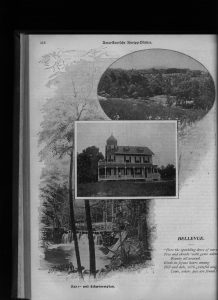
It took our prince charming 1 year before he mustered the nerve to approach Louisa. She learned of his qualifications and recognized immediately how this young man could help her achieve her goal of creating a thriving health retreat. Knowing that Benedict had been to Wörishofen, was publishing Amerikanschen Kneipp Blätter (a monthly magazine devoted to Kneipp’s water cure), and had established a clinical setting in NYC, himself, made him an ideal hydropathic medical director for her sanitarium. Expanding the therapies offered at Bellevue that included Kneipp water cure was a huge mutual bonus for both parties. Benedict trained someone to work at the Bellevue during the week, while he attended to his own endeavors back in the city. On the weekends, however, he was devoted to Bellevue and nurturing a relationship with Louisa.
By 1896 Lust was operating a health food store that specialized in authentic Kneipp products and a natural bakery; he was also publishing a monthly magazine, teaching students in water cure, and operating a clinic. Partnering with Louisa as her weekend medical director enhanced his own NYC interests, and the cross-pollination of their health pursuits grew.
Louisa was immensely successful with the Bellevue retreat. She built Bellevue, and the people came. The more time Benedict spent with Louisa, the more attracted to her he became. He liked her spirit of independence. He liked how she lived in the world. He saw the potential in a partnership with her, sharing a common passion for natural health and an entrepreneurial flair. Even so, he was reticent, even shy, and for a long time had little hope that their relationship could deepen.
A Dilemma
Nevertheless, the sparks kept flying, Benedict was increasingly smitten, and love was in the air. He went to Bellevue every weekend. Of course, he was the medical director, but into the mix was his love of Louisa. Each weekend they would take walks in the beautiful forests, discussing the operations of Bellevue. Louisa kept her personal distance, despite a most amicable professional connection. In the background, though, for Benedict the romantic energy swirled. Yet he still held back. He wrote, “I was attracted to her. But I was somewhat reluctant to press my suit for her hand, realizing as I did that from the standpoint of offering her material security, I could offer her no more than she already had.” (Boyd, 1997, p.51) Louisa owned a 60-acre parcel of land that had been developed into a beautiful retreat center, and she owned a turreted building within Butler itself. How could Benedict possibly compete with this woman’s ability to manifest prosperity? What could bond them?
Benedict realized that, together, much could be done. Braving the rejections, on each of their weekend strolls, Benedict would steer the conversation from business to the personal and finally to a possible marriage. Louisa was adept, though, at deflecting the subject quickly. She had no need for a husband, and enjoyed her independence and freedom, which rarely were choices for a woman living in the 19th century. Louisa always had a logical and practical reason to nix the question. Benedict’s resolve to marry melted more than once into feelings of despair. Enter, Louisa’s brother.
The Matchmaker
One weekend, Father Albert Stroebele asked Benedict to accompany him on a walk. He said, “Benedict, you and Louisa together are a good team in every way.” (Boyd, 1997, p.53) On the next weekend that he visited Bellevue, something magical seemed to have come over Louisa. She was more open, easier to talk to, and less evasive. They walked to the summit of Kickout Mountain, overlooking the town of Butler. He broached the possibility of marriage once again, encouraged by Father Stroebele’s encouragement. This time she said yes.
So began a partnership based on mutual love for each other and a common vision. Lust writes, “From that moment our plans moved forward rapidly. We would open a large institution. We would together spread the message to all America not only of the Kneipp water cure but also of the air cure of Rikli and Louisa’s own dietary theories and all else that we knew of Nature Cure.” (Boyd, 1997, p.53)
Once love between them was declared, they continued to talk ecstatically of their plans. Although business was on the agenda, intimacy also became important for them. Together, Louisa and Benedict created 2 enormous retreat centers: one in Butler, NJ, and the second in Tangerine, FL.
They married a few years later, on June 11, 1901. Of course, they went on a honeymoon. Can you guess where?
Yes, Niagara Falls.
Postscript: Louisa was 8 years senior to Benedict, and passed away unexpectedly and suddenly on July 25, 1925. Benedict wrote a touching epitaph on the tomb that they both share: “Love never faileth” in her memory. Together, they constituted the most powerful partnership and couple in Naturopathy of their era. They worked tirelessly building and cultivating a natural, drugless healthcare system that endured and is needed now more than ever. Benedict Lust passed away 20 years later, on September 4, 1945, after spending 50 years publishing and advocating for naturopathic medicine. Louisa and Benedict Lust lie side by side in the St Anthony cemetery in Butler, NJ.
References:
Boyd, A. L. (1997). Yungborn, The Life and Times of Dr. Benedict Lust, Founder and Father of Naturopathy, The Cornucopia of Alternative Medicine, A Memoir. Self-published by Anita Boyd, Lauren Proctor, and Helen Ebers.
Broyles, S. (2014). MCNY Blog: New York Stories. Revolutionary sisters: Victoria Woodhull and Tennessee Claflin. Available at: https://blog.mcny.org/2014/06/24/revolutionary-sisters-victoria-woodhull-and-tennessee-claflin/. Accessed June 12, 2019.
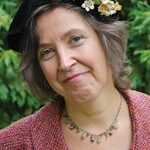 Sussanna Czeranko, ND, BBE, has recently completed the 5400-page, 12-volume set of books entitled The Hevert Collection, based upon the publications of Benedict Lust [1897 to 1923]. Dr Czeranko practices naturopathic medicine at Manitou Waters, in Manitou Beach, Saskatchewan, adjacent to Little Manitou Lake, a saline body of water located in a small valley in the high prairies of the Canadian West.
Sussanna Czeranko, ND, BBE, has recently completed the 5400-page, 12-volume set of books entitled The Hevert Collection, based upon the publications of Benedict Lust [1897 to 1923]. Dr Czeranko practices naturopathic medicine at Manitou Waters, in Manitou Beach, Saskatchewan, adjacent to Little Manitou Lake, a saline body of water located in a small valley in the high prairies of the Canadian West.

